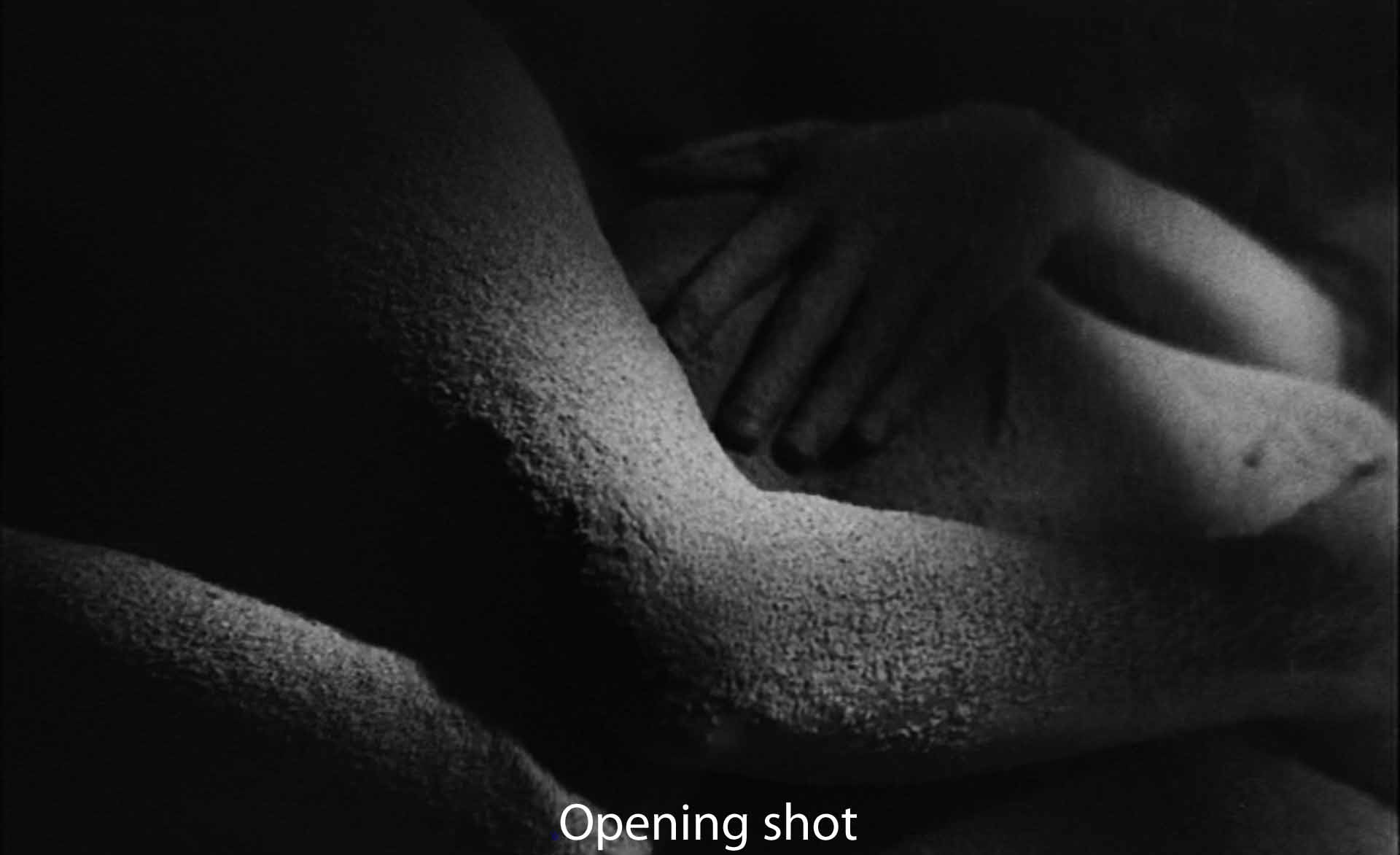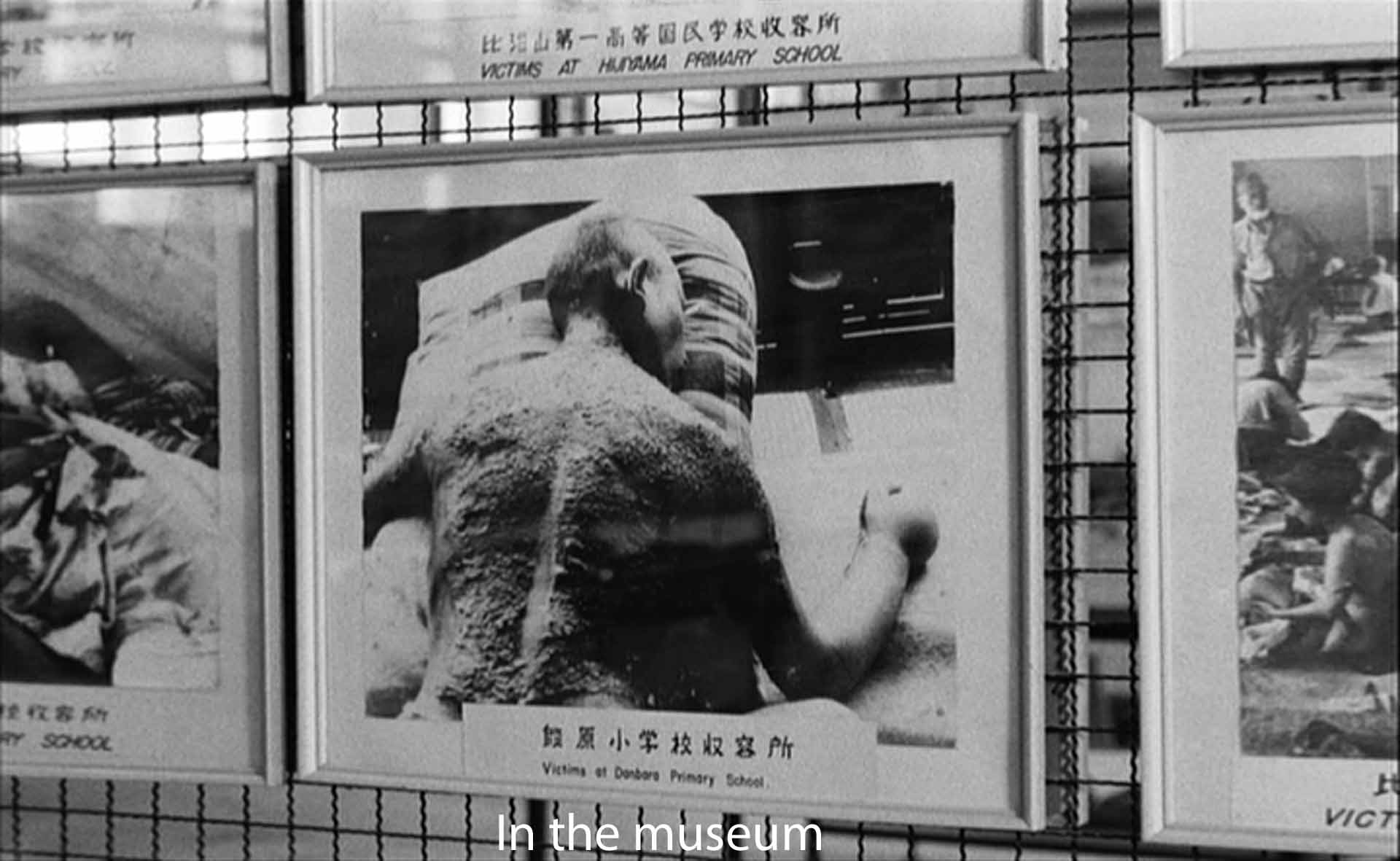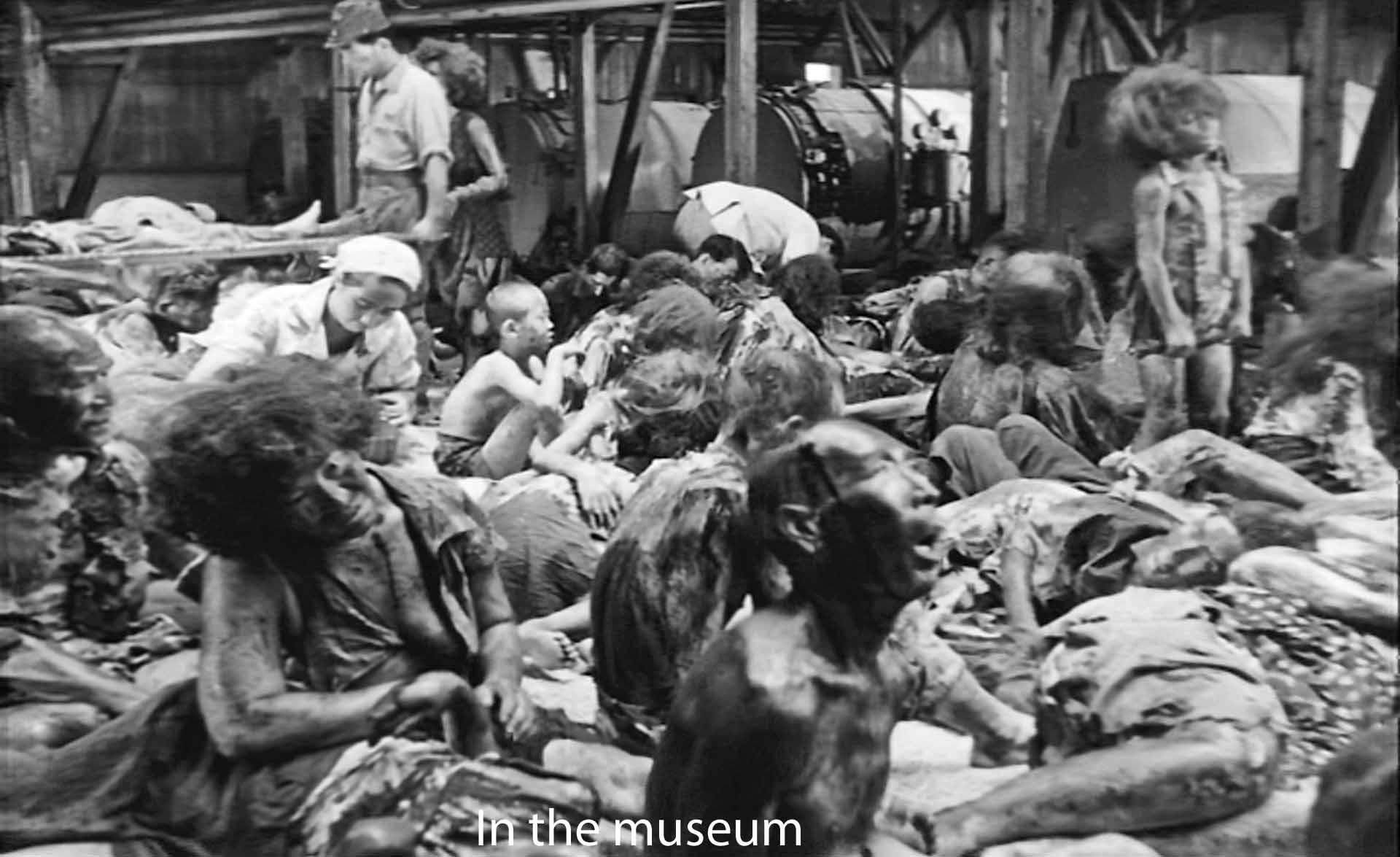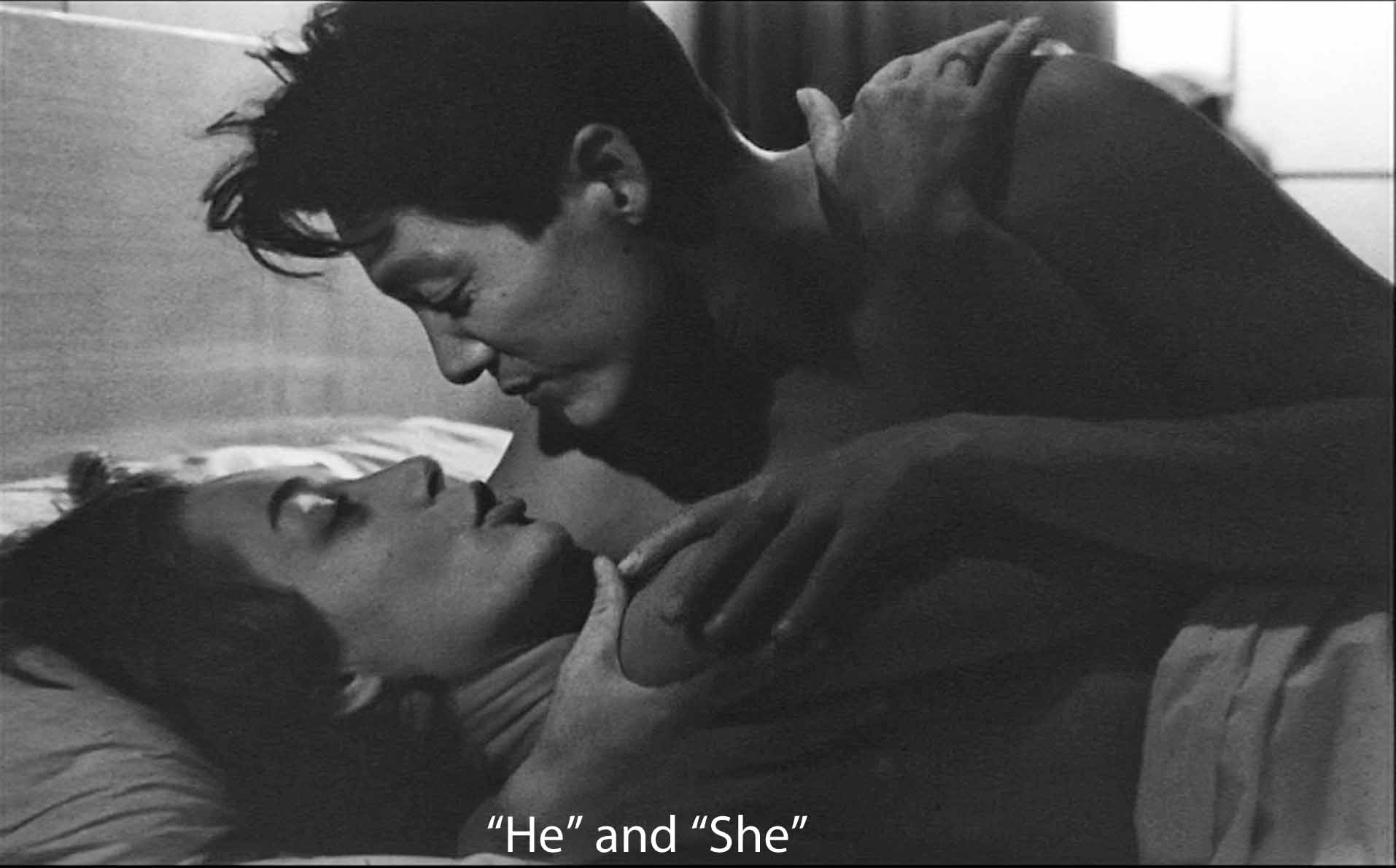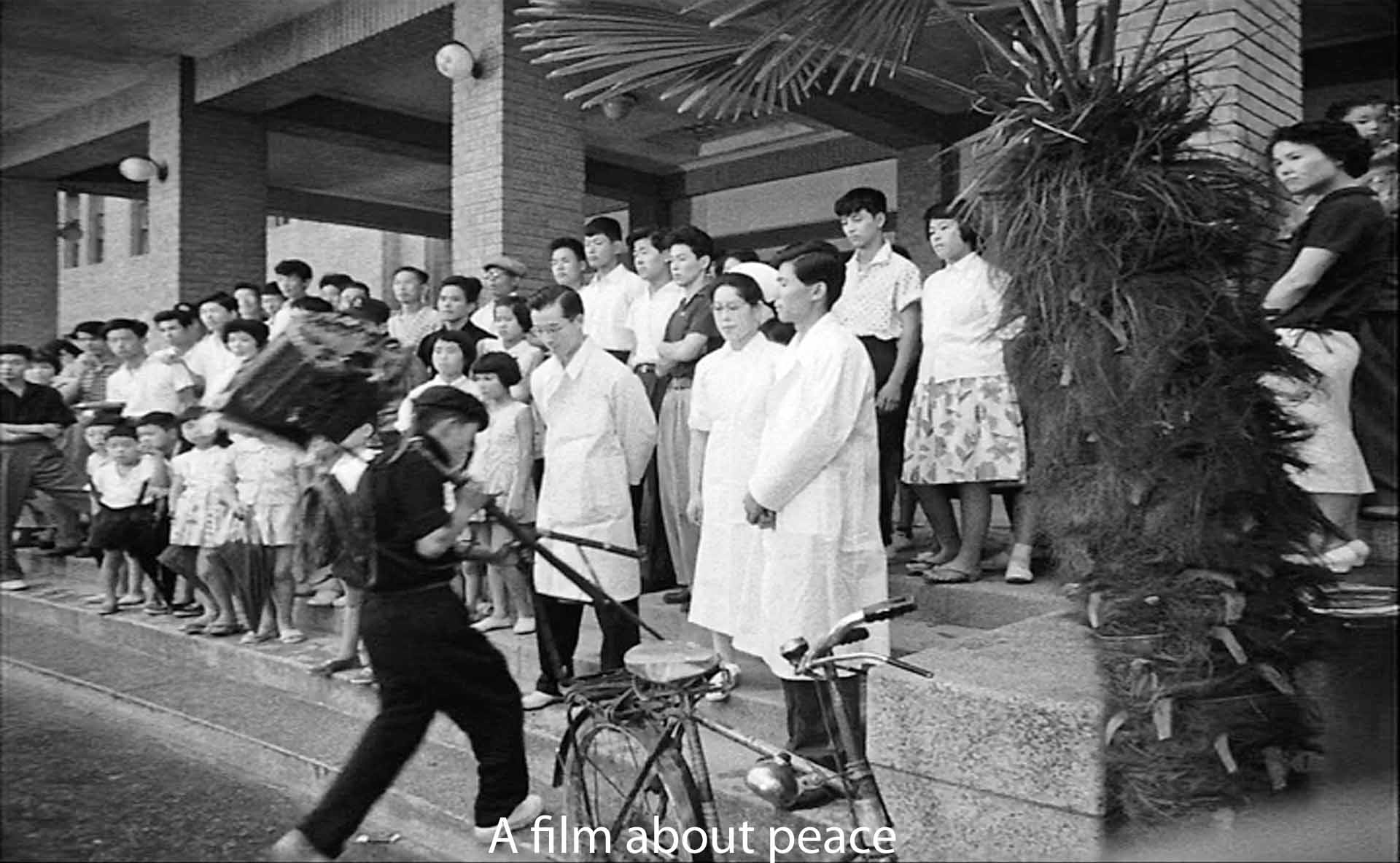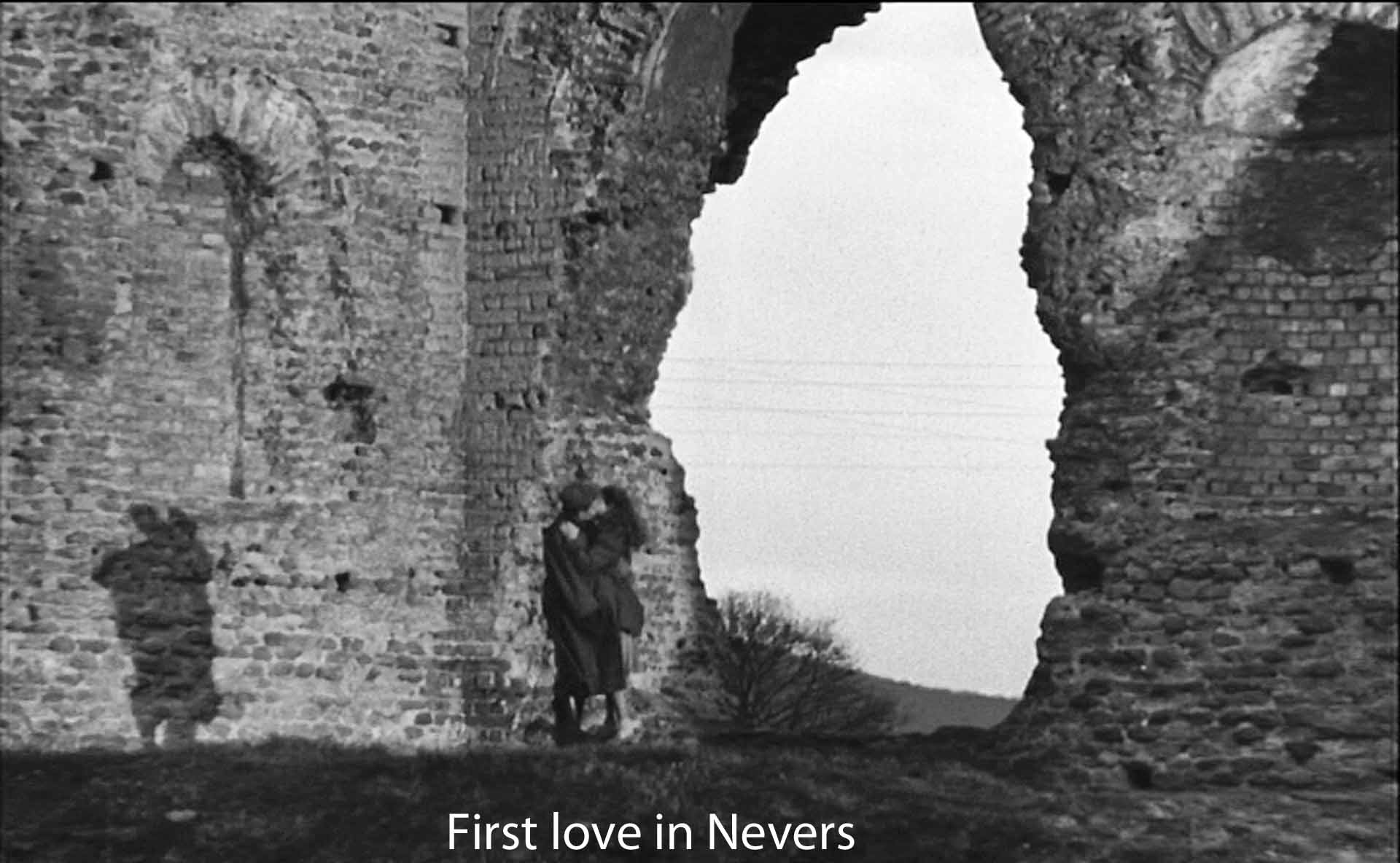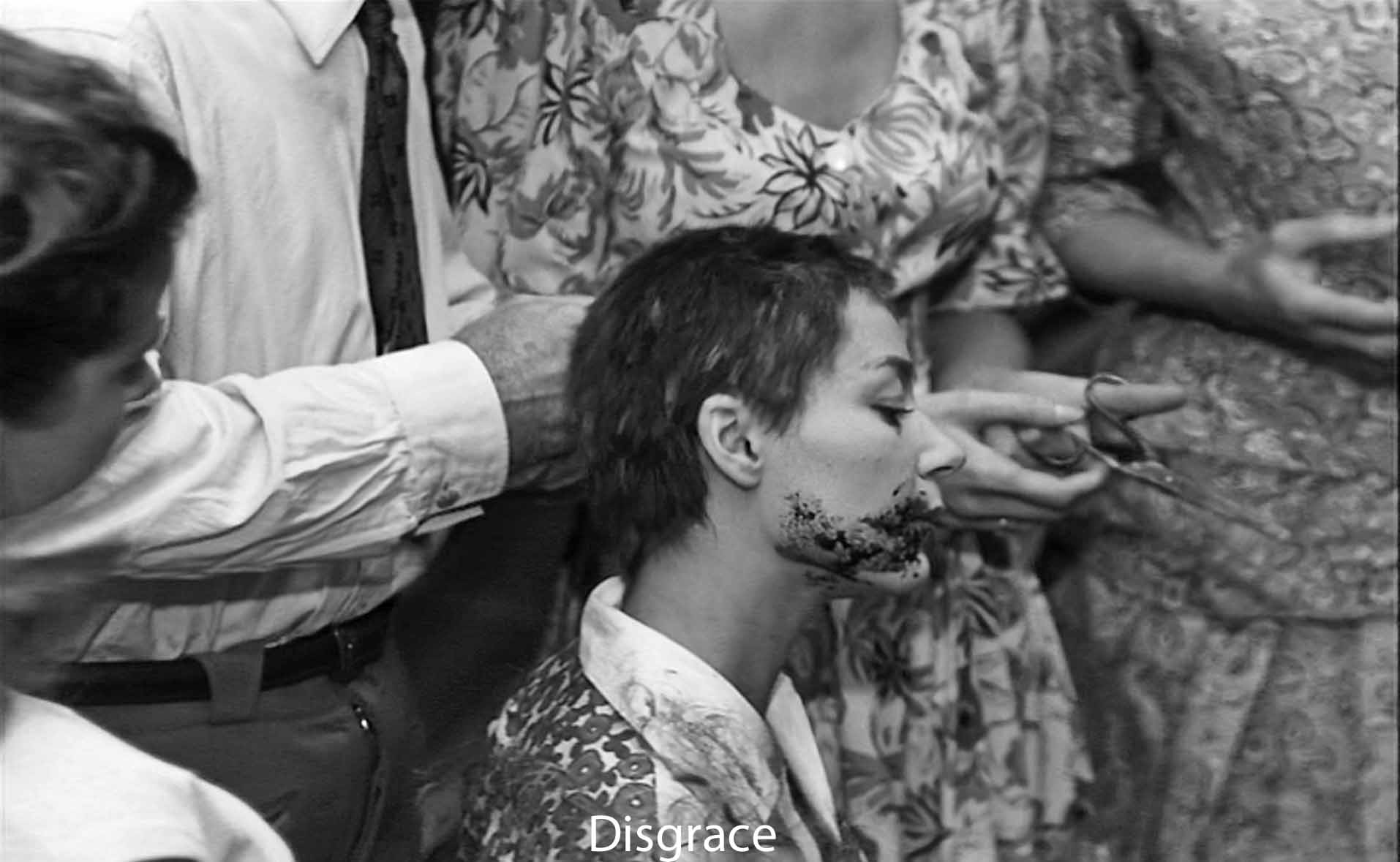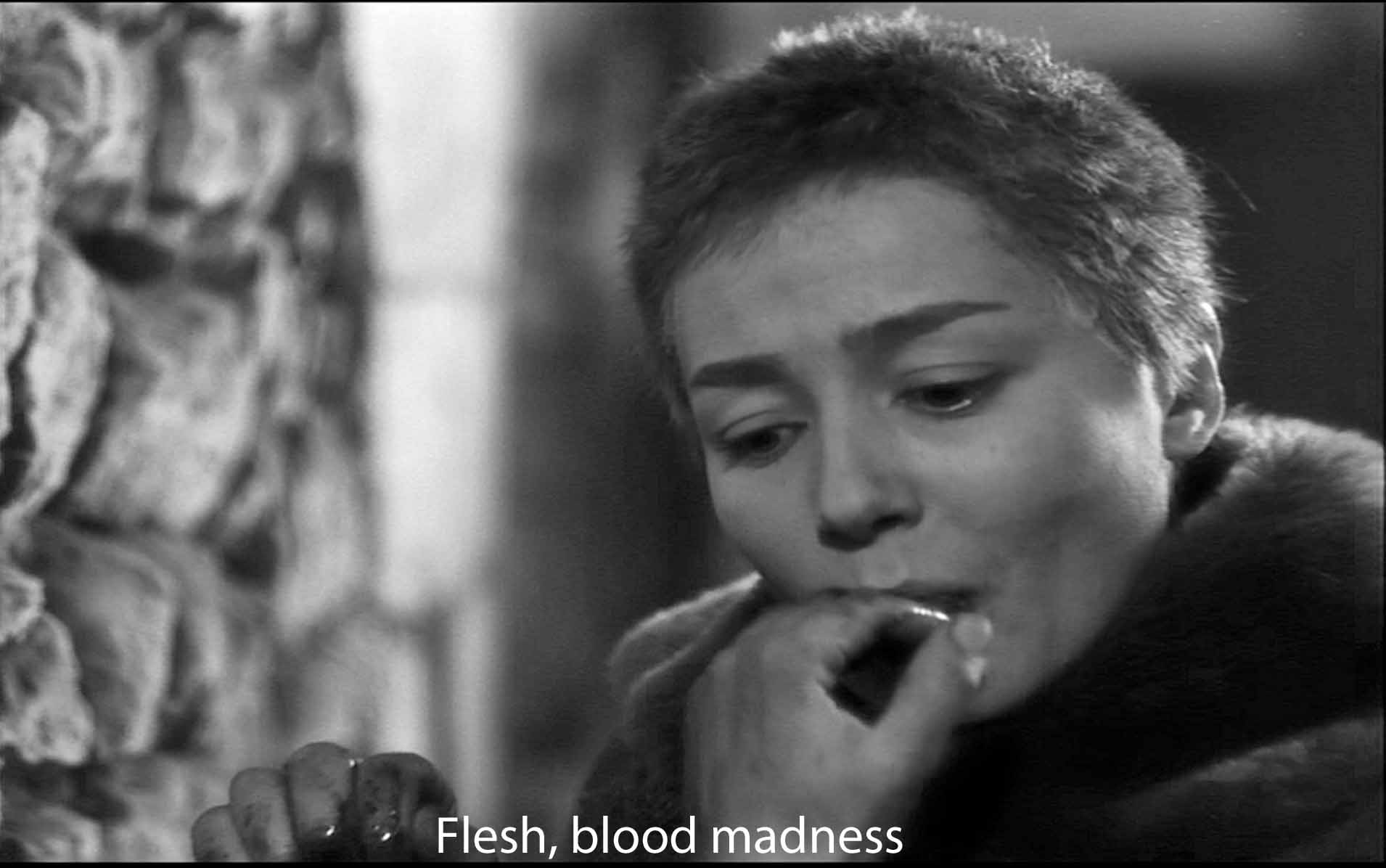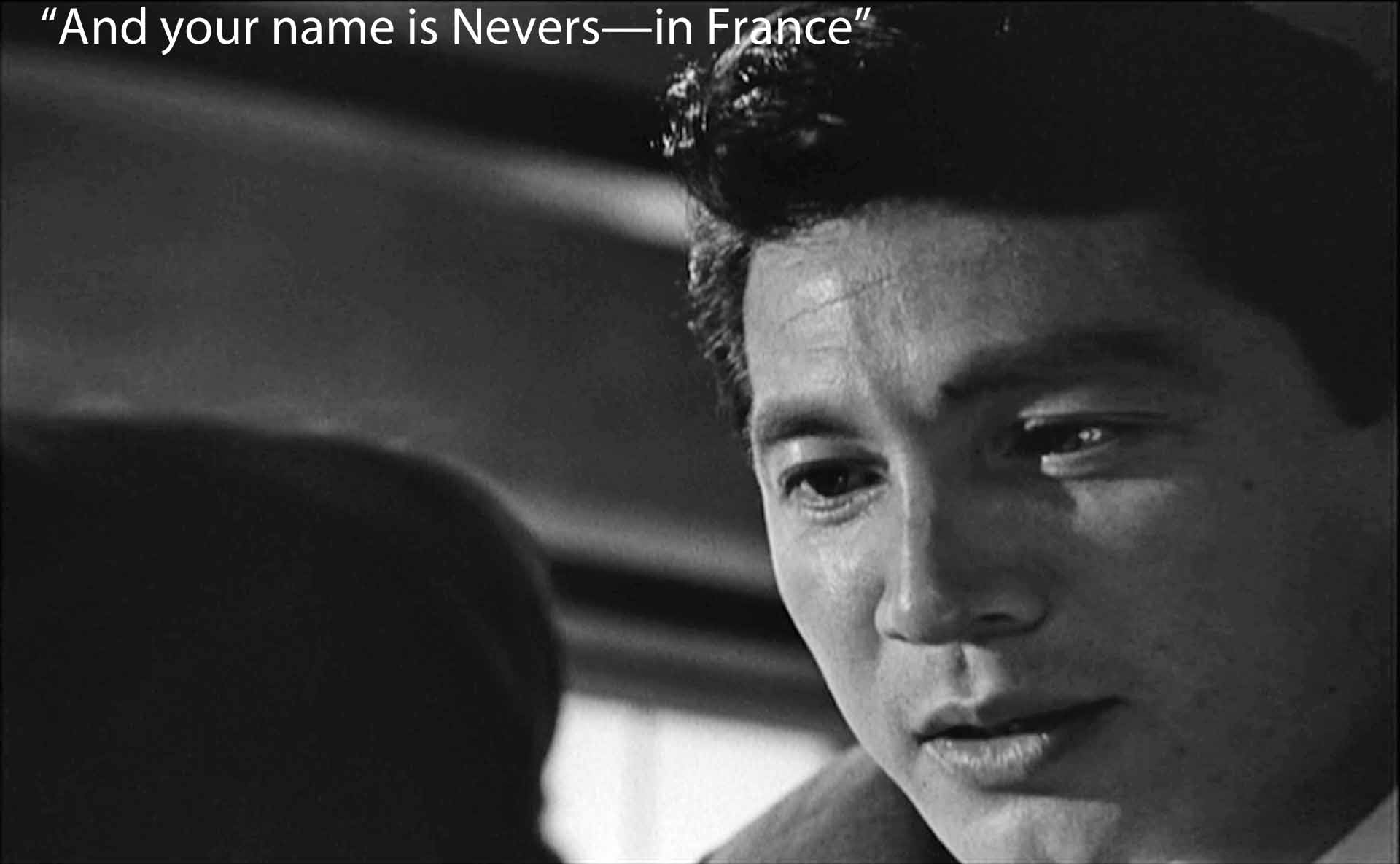Far and away the most significant film import of the last six months or so is thirty-eight-year-old Alain Resnais’ Hiroshima, Mon Amour.1 A brilliant, trying picture, at once sensitive and blunt, tender and savage, fleshy and spiritual, pacifist and politically realistic, it has something for everybody. For the film historian, not only does it provide another item to flesh out that increasingly meaningless label, nouvelle vague, it also uses some important new techniques of flashback. For the film critic, it is just a fine and meaningful film, to borrow a Bergman title, a lesson in love.
Hiroshima shows us a Frenchwoman and a Japanese having an impromptu affair in that city, which she tells us “was made for love.” As they embrace, she dryly and monotonously reconstructs from her tours of the city the world-wide horror of Hiroshima on August 6, 1945 and thereafter; later, she recalls as though on an analytic couch her personal horror—the French killing her German lover in the brisk process of liberation and her subsequent shames and sufferings. The Japanese tries to persuade her to stay in Hiroshima, but she refuses. Finally, he admits defeat in the film’s punchline. “Ton nom est Hiroshima,” she says, in their last meeting, and he sadly replies, “Ton nom est Nevers—en France.” “One is appalled” says one critic, “to think that Resnais has spent all that time, effort, and money to tell us that East is East and West is West.” True, in a way, that is all Resnais is saying, but by the end he has salted Kipling’s tired dictum with much, much more.
If nothing else, the complexity of Resnais’ technique rules out the possibility he is dealing with anything so banal as a study in nationalities. Here is no textbook flashback from Hiroshima to Nevers. Rather, as the film opens we see the locked bodies of the two lovers as they pass through four elements or “seasons.” Their flesh is spattered with sweat, dew, and a premonitory something (mica) that falls and sparkles like radioactive ash; finally their flesh is bare. The film proceeds to interlace shots of the lovers’ bodies with her reconstruction of that August horror from visits to the hospital and museum of Hiroshima—first the ball of fire and the mushroom cloud, then the dazed and mutilated survivors, the burned, scarred victims (cross-cut with the flesh of the lovers), girls with their hair falling out, a tortured bicycle, condemned tunafish, fused bottles of beer, melted steel and stone, the twisted bodies of the after-born children—there are no words for this kind of thing and thank God, few pictures. Over this visual horror and discontinuity, her voice recites a steady, flat, and deadly commentary, full of statistics and words like officiel, les actualités, and her lover repeats almost hypnotically the fact “Tu n’as rien vu à Hiroshima” (the first words of the film said over and over again in this opening sequence in his thick Japanese accent and toneless voice). Only after this litany of horror does the camera relax to the sweet, irregular smile of Emanuelle Riva playing the “She” of the film. Thus, already, when they dress and she leaves for her work—making a film on peace (”What else would you make a film about in Hiroshima?”)—Resnais has established the first of his themes and methods, verbally and cinematically peeling apart the laminations of fact and fiction overlaying the bomb. We are to contrast the tactual, actual, factual with the fake and pink film she is working on to “sell Peace like soap.” While she erects celluloid images of herself against war, her lover, it turns out, builds as an architect.
He finds her in the film’s peace parade and persuades her to come back to his office. They again make love, and afterwards, at a café, we hear the full story oi the mysterious images that from time to time have broken in on the earlier recitation. The hand of her Japanese lover, twitching in sleep, suddenly became the hand of someone else, twitching as he lay on the ground. At one point, inexplicably but brilliantly, we suddenly, for no reason at all, looked up to an obviously not-Japanese balcony. In the café, she tells the Japanese she had had a German lover during the war. They were going to run away to Bavaria, but a few days before the liberation of the town, he was shot (from that balcony) by a sniper. She stayed with him all the day and night of his dying, and when the liberators came, the townspeople cut all her hair off. Her parents, ashamed, locked her up in the house and finally, as she went mad and her screams could be heard; they locked her in the cellar. Months later, she recovered, forgot. Her hair grew out, and one night she bicycled away to Paris, coming to her new life on a sunny August day when in Hiroshima, the bomb fell.
In joining the old love affair, the new one, and the bombing Resnais insists on the essential sameness of human experience, specifically the bombing and the “liberation,” love and war. Shots of her shorn head match shots of Japanese women pulling out their radiated hair after the bomb. They crawl out of ruins and cellars as she had done with her German lover. The lighting of her basement prison is the soot of Hiroshima. “Deform me, deform me,” she cries to her new lover, “You destroy me—you are good for me.” This sameness is implicit in the very technique of telling about the bombing and the German lover in the setting of the later love affair which fuses both episodes, Resnais’ technique of unexplained flashbacks. It is intrinsic in the paradoxes of the setting in ugly, modernized Hiroshima—where the Ata river reminds her of her native Loire and the Peace Plaza is the place the bomb landed. Successive tracking shots through the streets of Hiroshima and Nevers take place at identical speeds. The Nevers sequences give off no sound. Rather, over images of France we hear the sounds of Hiroshima. Only a single cry of horror breaks through like remembered pain from past to present.
There is even a mythic quality to this oneness. Her Japanese lover tells her she is like a thousand women—the “She” herself identifies her German lover with her Japanese, speaking of his “Gerrnan name” as though he were two incarnations of one man, crying out, “I shall triumph over you all.” She is like a Venus (or Juliet or Perdita), to whom, after the canonical Frazerian round of fourteen years, her adversary Adonis returns. Indeed, she tells this second of her enemy lovers, “Unless there is a war, we shall not meet again.”
Yet, mythic or not, personal sorrows obviously cannot be the same order of thing as the world-tragedy of Hiroshima, and Resnais would be guilty of a grotesque sentimentality were not his images of the sameness of human experience completely overborne by images of- its essential separateness (”Tu n’as rien vu à Hiroshima”). Again, implicit in the technique is the theme. Her way of telling about her earlier love takes us in flashbacks out of the chronological time we all share into her private time, a Bergsonian, subjective durée réele in which we hear, first (if I can remember her memories in her order) of the schizophrenic episode and being locked in the cellar, then of her German lover, then her hair being cut off, then being locked in her room, then his death, and her bicycling to Paris.
Ultimately, though, her “histoire de quatre sous” cannot match the ”quatre fois” she visits the hospital at Hiroshima; “la petite coureuse” running to her German lover and her doom cannot be compared to the Japanese women running through the bombed city. Beginning with the background for the screen credits (a negative of a shot of mutated plants which will appear in the body of the film), images of opposition and separateness dominate the screen. The lovers have to shout at each other over the honks of auto horns, and in the moment of love the telephone rings or someone coughs next door. Visually, against the choppy sequences and the harsh blacks and whites of neon neo-Hiroshima, there stands out the marvelously long and graceful pan following the girl as she bicycles to her German lover through the gray, barren landscape of Nevers. Similarly, Resnais’ idiosyncrasy of cutting a discontinuous visual sequence against continuous dialogue or music on the soundtrack obliquely works out the same theme of sameness and separateness, as well as giving the film a curiously dual tone, at once literal and dreamy. Hiroshima, Mon Amour, as the actress herself points out, defines an eternal “principe d’inégalité,” a world doomed to fight because it is compounded of identities and contrasts, a world in which a Frenchwoman loves first a German, then a Japanese, in which love is like war, newsreel fact becomes cinematic memory, and madness, as she says, is the same as intelligence. Resnais himself—this is his first feature-length fiIm; till Hiroshima he had made only art shorts—says the picture is musically composed, an andante or theme and variations. In the last third of the film, this music, this uneasy and dialectic interplay of sameness and separateness, draws to a close and, in doing so, the theme of the opening comes clear again. After “She” has recalled her first love, rushed off to her hotel to denounce herself to herself in her mirror for having now given up even the memory of her love, she returns to the bar. The Japanese has also come back and begs her to remain with him in Hiroshima. The rest of the night, she lets him follow her, ten paces behind, through the honkytonk streets and deserted nightclubs, close but untouching like Ransom’s equilibrists, until the dawn and her plane to Paris.
This section of the film, twenty almost wordless minutes, has been criticized as dull, and alas, it is. Yet, after the hectic of the bombing and the two love affairs, the emotional letdown is both unavoidable and supremely appropriate. It is precisely the feeling demanded by the paradoxical theme—that human union is neither permanent nor even, really, possible; we are separate even as we are inextricably entwined; one flesh is two. Thus, we the audience must pass through the same act of oblivion as “She” to learn what the film tells us. It is the very fact that she could forget the pain of her first love that makes her refuse to love again. “je t’oublierai, je t’oublie déjà,” she tells her Japanese lover. We, too, in those twenty minutes, forget. We forget the marked flesh of Hiroshima, and we begin to think that this is just a film about lovers of different nationalities and races. As it is—sort of.
Their affair, his silent unpursuing pursuit exactly symbolizes their fusion and their separateness. The lovers pass through a bus station and she sits on a bench in the waiting-room next to an old Japanese woman. He sits on the other side of the old woman, who asks him something in Japanese and he replies in Japanese.2 Similarly, when in a nightclub, a man tries to pick her up, the man speaks to her in English. And all the time, her lover is following her, with her and yet separated, as night, day, “été comme hiver,” or Nevers, Hiroshima, on the turning earth. The “Ton nom est Hiroshima.” “Ton nom est Nevers—en France,” speaks not of nationalities but in nationalities of all the irreducible separatenesses and samenesses, that drowsy melody of attractions and repulsions which binds into one world all the circling human monads—quite like the particles in an atom which, if they love, explode.
1 Hiroshima, Mon Amour. Produced and directed by Alain Resnais. Story and screenplay by the novelist Marguerite Duras. Scenes in France photographed by Sacha Vierny. Edited by Jasmine Chasney and Henri Colpì. “She” played by Emmanuelle Riva, “He” by Eiji Okada. The sleepy and splendidly Stravinskian score is by Giovanni Fusco except the waltz for the love scenes in Nevers which is by Georges Delerue.Back
2 It is, I suppose, part of Resnais’ imagery of separation that there are no subtitles in this dialogue. I am told, however, by a beneficiary of wartime training that the old woman asks, “What nationality is she?” and the lover replies, “French.”Back
